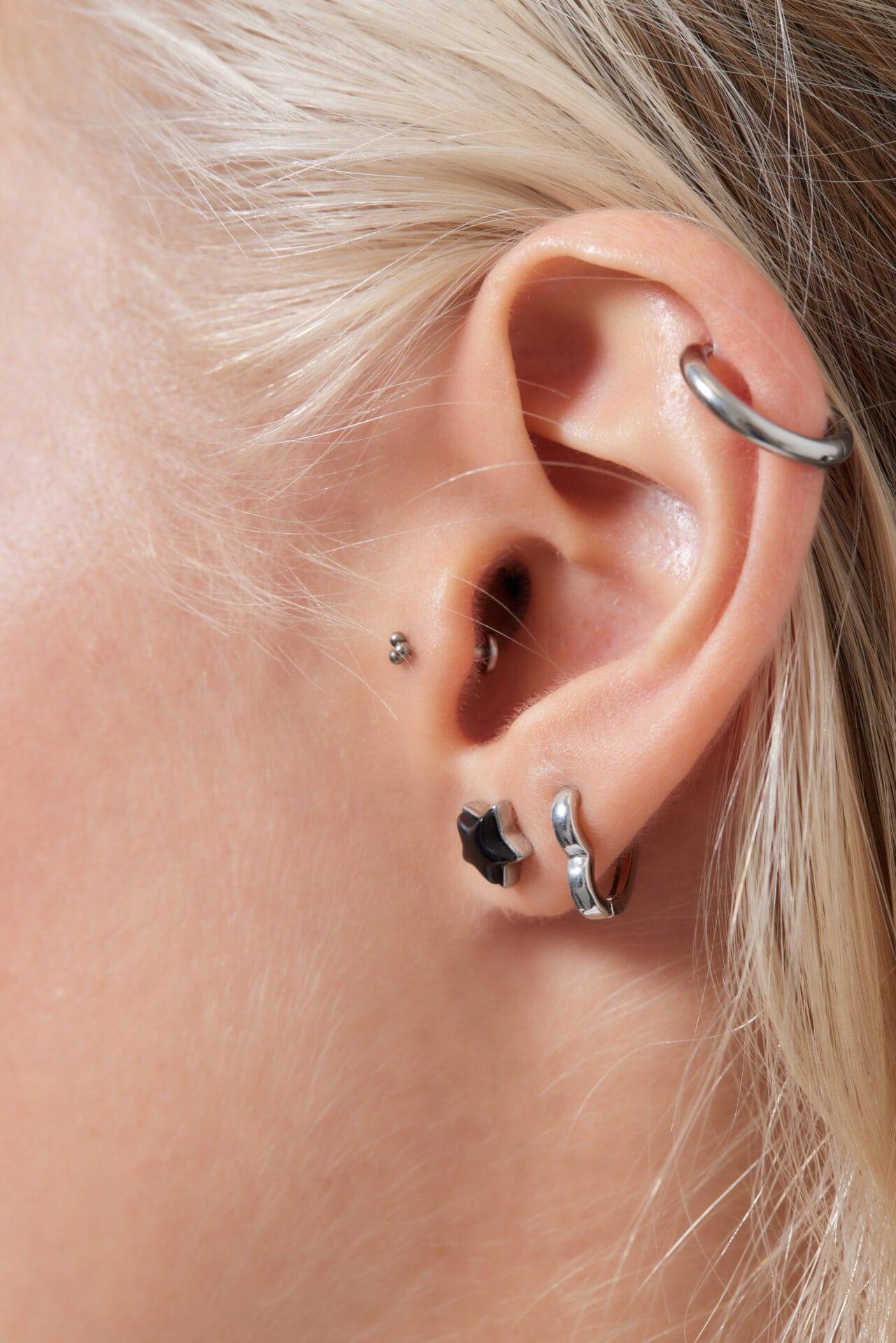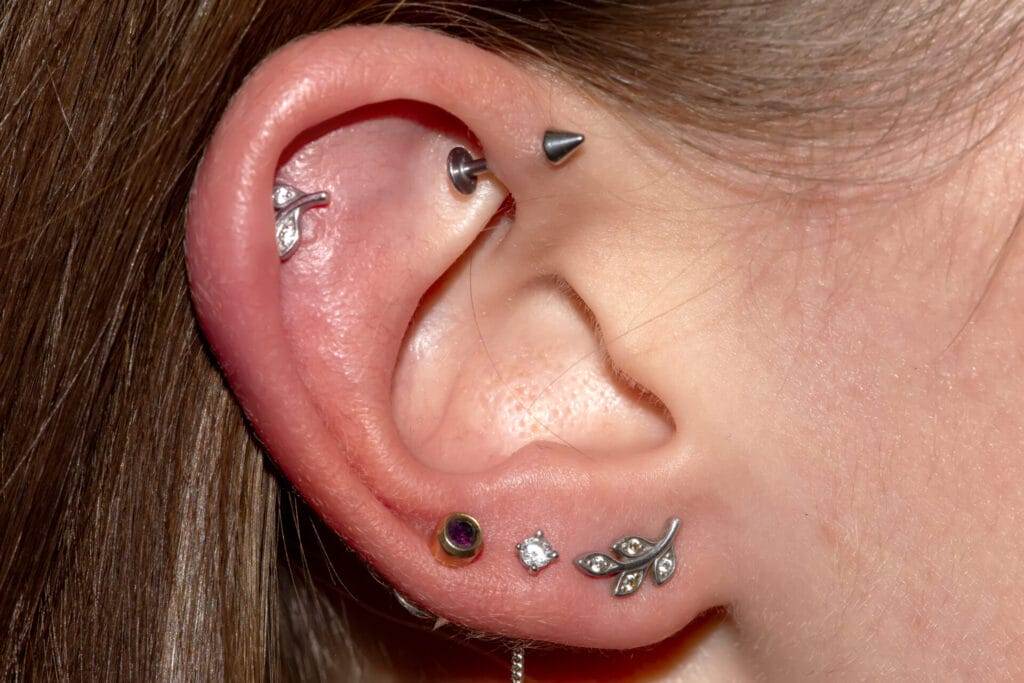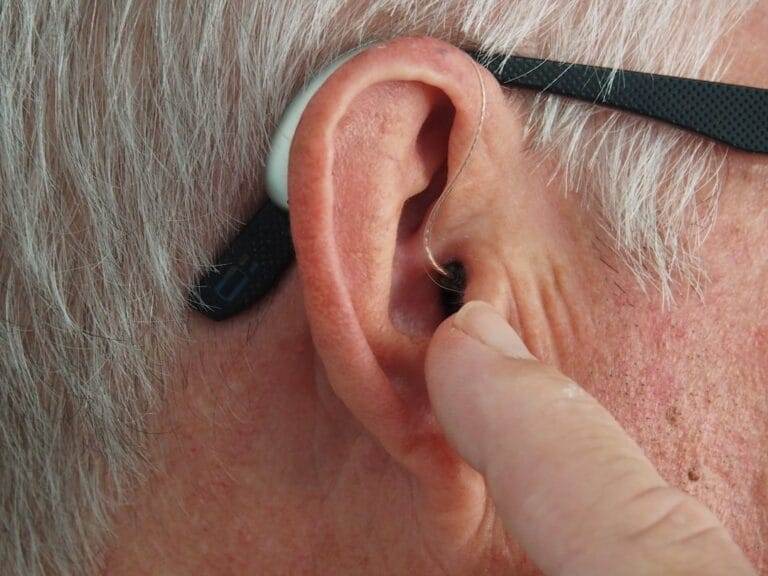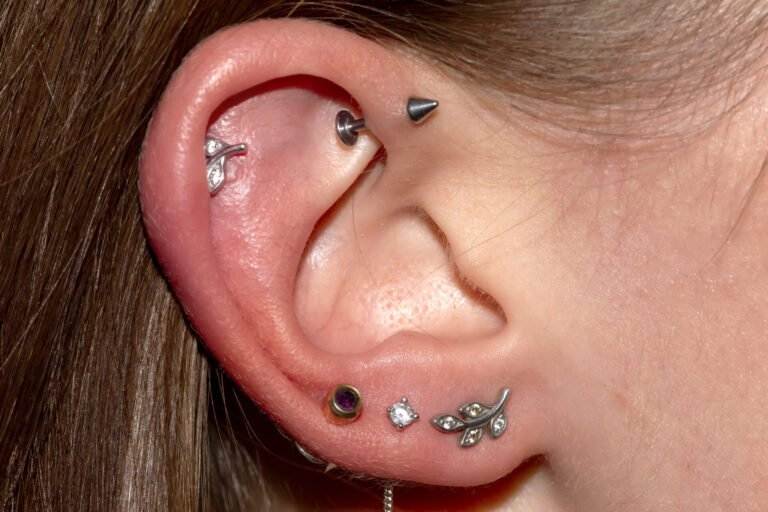Body piercing is a form of body modification that has been practiced for centuries. It has a rich history and cultural significance in various societies around the world. The origins of body piercing can be traced back to ancient civilizations such as the Egyptians, Romans, and Aztecs, who used piercings for religious and cultural purposes.
In ancient Egypt, body piercing was seen as a symbol of wealth and status. The pharaohs and members of the royal family would adorn themselves with elaborate piercings made from gold and precious gemstones. These piercings were believed to bring them closer to the gods and protect them from evil spirits.
Similarly, in ancient Rome, body piercing was a sign of social status and wealth. Roman soldiers would pierce their nipples as a symbol of their bravery and strength. It was also believed that these piercings would make them more attractive to potential partners.
In Aztec culture, body piercing was used for ritualistic purposes. Priests would pierce their tongues and ears as a way to communicate with the gods. It was believed that the blood from these piercings would appease the gods and bring good fortune to the community.
Today, body piercing has become a popular trend among people of all ages and backgrounds. It is no longer limited to specific cultures or social classes. People choose to get pierced for various reasons, including self-expression, aesthetics, and personal empowerment.
Types of Body Piercings: From Earlobe Piercings to Genital Piercings
There are numerous types of body piercings that one can choose from. From simple earlobe piercings to more intimate genital piercings, there is a wide range of options available for those looking to express themselves through body modification.
Ear piercings are perhaps the most common type of body piercing. They can be as simple as a single hole in each earlobe or more elaborate with multiple piercings along the ear cartilage. Ear piercings can be adorned with various types of jewelry, including studs, hoops, and dangles.
Facial piercings are another popular choice. These include nose piercings, eyebrow piercings, lip piercings, and tongue piercings. Facial piercings can be a bold statement and can enhance one’s features. They can also be easily hidden or removed if desired.
Body piercings refer to piercings on other parts of the body, such as the belly button, nipples, and surface piercings. These types of piercings can be both aesthetically pleasing and sensual. They can be adorned with different types of jewelry, including barbells, rings, and dermal anchors.
Genital piercings are more intimate and personal. They can be done on both males and females and can enhance sexual pleasure for both partners. Genital piercings include Prince Albert piercings, clitoral hood piercings, and frenum piercings.
Choosing the Right Piercing: Factors to Consider Before Getting Pierced
Before getting a piercing, there are several factors that one should consider to ensure a positive experience. These factors include pain tolerance, healing time, piercing location, and the expertise of the piercing artist.
Pain tolerance varies from person to person. Some individuals have a higher pain threshold and may find the piercing process less uncomfortable than others. It is important to consider your own pain tolerance when choosing a piercing location.
Healing time is another important factor to consider. Different types of piercings have different healing times. For example, earlobe piercings typically take 6-8 weeks to heal, while cartilage piercings can take up to a year. It is important to be patient and follow proper aftercare instructions to ensure a successful healing process.
The location of the piercing is also an important consideration. Some piercings may be more prone to complications or discomfort than others. For example, tongue piercings can cause speech difficulties and may interfere with dental health. It is important to research the potential risks and benefits of each piercing location before making a decision.
Lastly, the expertise of the piercing artist is crucial. It is important to choose a reputable and experienced piercing artist who follows proper hygiene and safety protocols. They should be knowledgeable about different types of piercings and be able to provide guidance and aftercare instructions.
Preparation for Your Piercing: What to Expect Before, During, and After the Procedure
Before getting a piercing, there are several steps that one should take to ensure a smooth and successful procedure. These steps include following pre-piercing instructions, understanding the piercing process, and being aware of aftercare instructions.
Pre-piercing instructions may vary depending on the type of piercing and the studio you choose. However, there are some general guidelines that apply to most piercings. These include avoiding alcohol and blood-thinning medications before the procedure, ensuring that you are well-rested and hydrated, and eating a light meal beforehand.
During the piercing process, the piercer will clean the area with an antiseptic solution and mark the spot where the piercing will be placed. They will then use a sterilized needle or piercing gun to create the hole. The jewelry will be inserted immediately after the piercing is done.
After the procedure, it is important to follow proper aftercare instructions to ensure a successful healing process. This may include cleaning the piercing with saline solution or a mild soap, avoiding touching or twisting the jewelry, and avoiding swimming or submerging the piercing in water for a certain period of time.
Piercing Aftercare: Tips and Tricks to Keep Your Piercing Clean and Healthy
Proper aftercare is crucial to ensure a successful healing process and to prevent complications such as infection or rejection. Here are some tips and tricks to keep your piercing clean and healthy:
1. Cleaning instructions: Clean your piercing twice a day with saline solution or a mild soap. Avoid using harsh chemicals or alcohol-based products, as they can irritate the piercing. Gently clean around the jewelry and rinse thoroughly with water.
2. Avoiding irritants: Avoid exposing your piercing to irritants such as perfumes, lotions, or hair products. These can cause irritation or allergic reactions. It is also important to avoid swimming in pools, hot tubs, or natural bodies of water until the piercing is fully healed.
3. Signs of infection: Be aware of the signs of infection, which may include redness, swelling, pain, discharge, or fever. If you notice any of these symptoms, seek medical attention immediately. Do not remove the jewelry unless instructed by a healthcare professional.

Common Piercing Problems: How to Identify and Treat Infections, Allergies, and Other Issues
While most piercings heal without complications, there are some common problems that can arise. It is important to be able to identify these problems and know how to treat them.
Infections are one of the most common issues with piercings. Signs of infection include redness, swelling, pain, discharge, or fever. If you suspect that your piercing is infected, it is important to seek medical attention immediately. The infection may need to be treated with antibiotics.
Allergic reactions can also occur with certain types of jewelry. Some people may be allergic to certain metals such as nickel or copper. Signs of an allergic reaction include itching, redness, swelling, or a rash around the piercing site. If you suspect an allergic reaction, it is important to remove the jewelry and consult with a healthcare professional.
Migration and rejection are other potential issues with piercings. Migration occurs when the body pushes the jewelry out of the piercing site, causing it to move or migrate. Rejection occurs when the body completely rejects the jewelry, pushing it out of the piercing site. If you notice any signs of migration or rejection, it is important to consult with a piercing professional.
Piercing Jewelry: Materials, Styles, and Trends to Choose From
When it comes to piercing jewelry, there are a wide variety of materials, styles, and trends to choose from. It is important to choose jewelry that is safe, comfortable, and suits your personal style.
Jewelry materials should be hypoallergenic and safe for long-term wear. Some common materials include surgical steel, titanium, gold, and bioplast. It is important to avoid cheap or low-quality jewelry that may contain harmful substances or cause allergic reactions.
Jewelry styles can vary depending on the type of piercing and personal preference. Some common styles include studs, hoops, barbells, captive bead rings, and dermal anchors. It is important to choose jewelry that is appropriate for the piercing location and suits your personal style.
Current trends in piercing jewelry include minimalistic designs, geometric shapes, and unique gemstones. Many people are opting for dainty and delicate pieces that can be layered or mixed and matched. It is important to choose jewelry that reflects your individuality and makes you feel confident.
How to Change and Remove Your Piercing: Dos and Don’ts for Safe and Easy Piercing Maintenance
Changing or removing your piercing should be done with caution to avoid complications or injury. Here are some dos and don’ts for safe and easy piercing maintenance:
1. Changing jewelry: If you want to change your piercing jewelry, make sure that the piercing is fully healed before doing so. Clean your hands and the new jewelry with an antiseptic solution before handling. Gently remove the old jewelry and insert the new one, being careful not to force it or cause any pain.
2. Removing jewelry: If you need to remove your piercing jewelry temporarily, make sure that the piercing is fully healed before doing so. Clean your hands and the jewelry with an antiseptic solution before handling. Gently remove the jewelry by unscrewing or unclasping it, being careful not to force it or cause any pain.
3. When to seek professional help: If you are having difficulty changing or removing your piercing jewelry, it is important to seek professional help. A piercing professional can assist you and ensure that the process is done safely and without causing any damage to the piercing.
Piercing Risks and Safety Precautions: What You Need to Know Before Getting Pierced
While body piercing is generally safe when done by a professional, there are some risks involved. It is important to be aware of these risks and take necessary safety precautions before getting pierced.
Health risks associated with body piercing include infection, allergic reactions, scarring, and nerve damage. These risks can be minimized by choosing a reputable piercing studio that follows proper hygiene and safety protocols. It is also important to follow proper aftercare instructions and seek medical attention if any complications arise.
Safety precautions that should be taken before getting pierced include researching the piercing studio and ensuring that they have a clean and sterile environment. The piercer should use sterile equipment and wear gloves during the procedure. It is also important to ask about their experience and qualifications.
Choosing a reputable piercing studio is crucial for ensuring a safe and successful piercing experience. Look for studios that have good reviews, are licensed, and have experienced piercers. It is also important to ask about their sterilization processes and hygiene practices.
Piercing Etiquette: How to Handle Reactions from Friends, Family, and Society
Body piercing can sometimes elicit negative reactions from friends, family, and society. It is important to know how to handle these reactions and navigate piercing etiquette.
Dealing with negative reactions can be challenging, but it is important to remember that your body is your own and you have the right to express yourself in any way you choose. It can be helpful to educate others about body piercing and explain your reasons for getting pierced. However, it is also important to set boundaries and not engage in arguments or debates if you are not comfortable doing so.
Educating others about body piercing can help dispel misconceptions and stereotypes. Many people may have outdated or inaccurate information about body piercing. By sharing your knowledge and personal experiences, you can help others understand the cultural significance and personal empowerment that body piercing can bring.
Respecting others’ choices is also an important aspect of piercing etiquette. Just as you have the right to express yourself through body piercing, others have the right to choose not to get pierced. It is important to respect their choices and not judge or criticize them for their decisions.
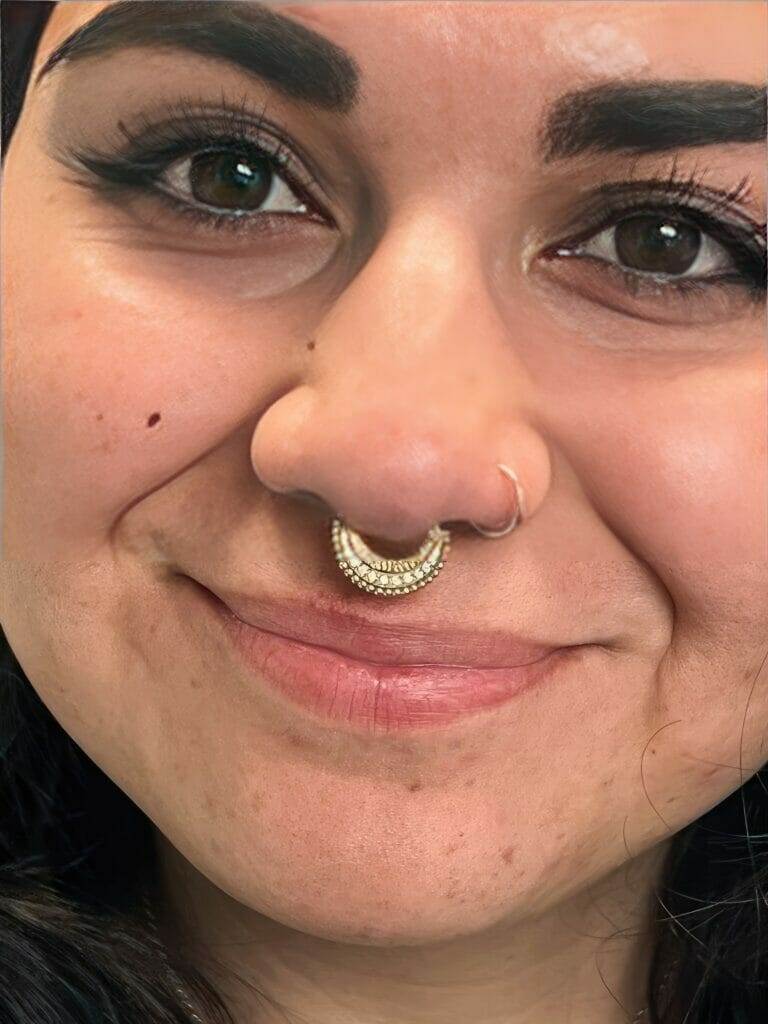
Why Body Piercing Can Be a Fun, Empowering, and Beautiful Way to Express Yourself.
In conclusion, body piercing has a rich history and cultural significance that spans across various civilizations. It has evolved into a popular trend that allows individuals to express themselves creatively and embrace their individuality.
Body piercing offers a wide range of options, from simple earlobe piercings to more intimate genital piercings. The choice of piercing should be based on personal preference, pain tolerance, healing time, and the expertise of the piercing artist.
Proper aftercare is crucial for ensuring a successful healing process and preventing complications such as infection or rejection. It is important to follow cleaning instructions, avoid irritants, and be aware of signs of infection or allergic reactions.
While there are some risks associated with body piercing, these can be minimized by choosing a reputable piercing studio and taking necessary safety precautions. It is important to educate others about body piercing and respect their choices.
Overall, body piercing can be a fun, empowering, and beautiful way to express yourself. It allows you to embrace your individuality and showcase your personal style. Whether you choose a simple earlobe piercing or a more elaborate genital piercing, body piercing can be a form of self-expression that brings joy and confidence.

